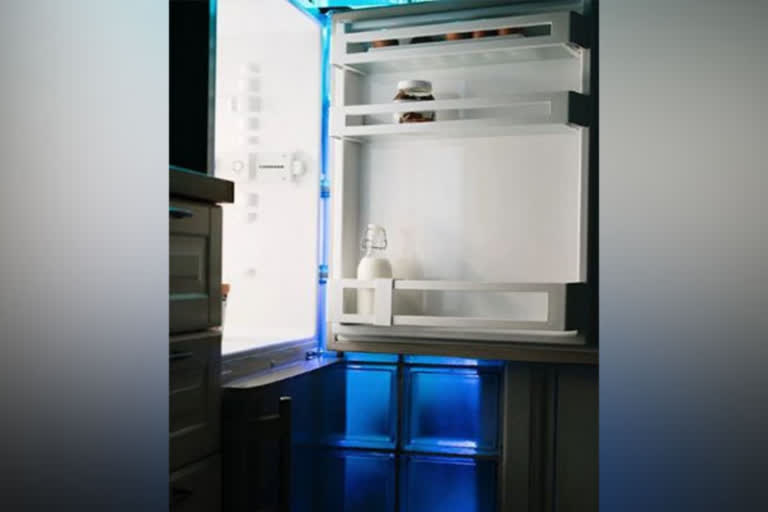Hyderabad: Adding salt on the road before a winter storm alters the formation of ice. Using this basic concept, the researchers at the Department of Energy, Lawrence Berkeley National Laboratory (Berkeley Lab), have developed a new heating and cooling method. The technique called "Ionocaloric Cooling" was described in a paper published in the journal Science.
Ionocaloric cooling uses energy, or heat, stored or released during the changing phases of a material, like solid ice turning into liquid water. Melting a material absorbs heat from the surroundings while solidifying it releases heat. The ionocaloric cycle causes this phase and temperature change through the flow of ions (electrically charged atoms or molecules) which come from salt.
Researchers believe that the method could one day provide an efficient heating and cooling alternative, which could account for more than half of the energy used in homes, and help phase out currently ongoing "vapour compression" systems, which utilize gases with high global warming potential as refrigerants. Ionocaloric refrigeration could eliminate the risk of such gases escaping into the atmosphere by replacing them with solid and liquid components.
"The landscape of refrigerants is an unsolved problem: No one has successfully developed an alternative solution that makes stuff cold, works efficiently, is safe, and doesn't hurt the environment," said Drew Lilley, a graduate research assistant at Berkeley Lab and PhD candidate at UC Berkeley who led the study. "We think the ionocaloric cycle has the potential to meet all those goals if realized appropriately."
For countries to meet climate change goals, such as those in the Kigali Amendment (accepted by 145 parties, including the United States in October 2022), it is essential to find a replacement for current refrigerants. The agreement commits signatories to reduce the production and consumption of Hydrofluorocarbons (HFCs) by at least 80% over the next 25 years. HFCs are powerful greenhouse gases found in refrigerators and air conditioners and can trap heat thousands of times as effectively as carbon dioxide.
The new ionocaloric cycle joins several other kinds of "caloric" cooling techniques in development. Methods such as magnetism, pressure, stretching, and electric fields - to manipulate solid materials so that they absorb or release heat are included in the development. Ionocaloric cooling differs by using ions to drive solid-to-liquid phase changes. Using a liquid gives the added benefit of making the material pumpable, which makes it easier to get heat in or out of the system - something solid-state cooling has always struggled with.
Also read: Qualcomm unveils new SoC for vehicles
Lilley and corresponding author Ravi Prasher, a research affiliate in Berkeley Lab's Energy Technologies Area and adjunct professor in mechanical engineering at UC Berkeley, laid out the theory underlying the ionocaloric cycle. They calculated that the ionocaloric cycle has the potential to compete with or even exceed the efficiency of gaseous refrigerants found in the majority of systems today.
They also demonstrated the technique by conducting experiments. Lilley used a salt made with iodine and sodium, alongside ethylene carbonate, a common organic solvent used in lithium-ion batteries. "There's potential to have refrigerants that are not just GWP [Global Warming Potential]-zero, but GWP-negative," Lilley said. "Using a material like ethylene carbonate could actually be carbon-negative because you produce it by using carbon dioxide as an input. This could give us a place to use CO2 from carbon capture."
Running current through the system moves the ions, changing a material's melting point. When it melts, it absorbs heat from the surroundings, and when the ions are removed and the material solidifies, it gives heat back. The first experiment showed a temperature change of 25 degrees Celsius using less than a volt, a greater temperature lift than demonstrated by other caloric technologies. "There are three things we're trying to balance: the GWP of the refrigerant, energy efficiency, and the cost of the equipment itself," Prasher said. "From the first try, our data looks very promising on all three of these aspects."
While caloric methods are often discussed in terms of their cooling power, the cycles can also be harnessed for applications such as water heating or industrial heating. The ionocaloric team is continuing work on prototypes to determine how the technique might scale to support large amounts of cooling, improve the amount of temperature change the system can support, and improve efficiency.
"We have this brand-new thermodynamic cycle and framework that brings together elements from different fields, and we've shown that it can work," Prasher said. "Now, it's time for experimentation to test different combinations of materials and techniques to meet the engineering challenges."



